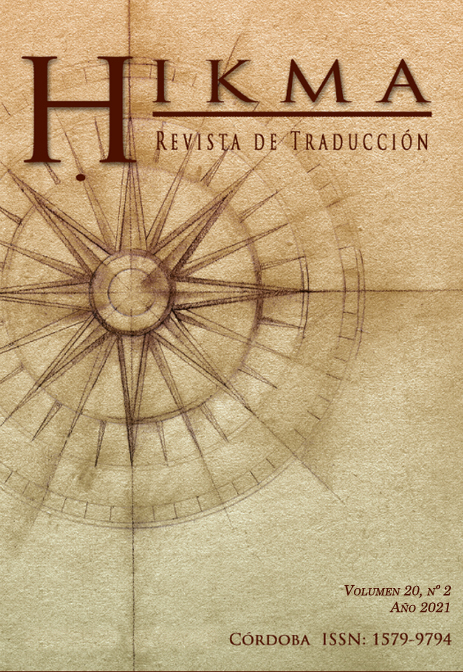From mommet to ugly: An analysis of the linguistic duality and idiolect of Tess Durbeyfield in the Spanish translations of Tess of the d’Urbervilles
Main Article Content
Abstract
The current study aims at critically exploring the resulting identity of Tess of the d’Urbervilles’ main character, Tess Durbeyfield, in the Spanish translations through the analysis of her linguistic variation. Throughout the novel, Tess is characterised by a unique duality in linguistic variation, which shapes her identity. She is capable of using both dialectal and non-dialectal marks, which differentiates her from the rest of the novel’s characters. To reach thus the goal of this research, that is, to verify whether Tess Durbeyfield’s multifaceted identity is maintained in the Spanish translations, it is essential to analyse the linguistic variation of the novel’s heroine in the target texts. For the project, the three Spanish translations that exist of the novel have been analysed (carried out in 1924, 1994 and 2017).
In order to reach this aforementioned objective, the strategies carried out by the different translators regarding linguistic variation will be analysed, focusing on the possible identity distortion that these decisions may entail in the heroine’s characterization. In order to observe Tess Durbeyfield’s idiolect and linguistic variation, all dialogues from the novel and its corresponding translations have been analysed and classified. In the project, through selected dialogues, it will be observed whether the translation strategies regarding the heroine’s linguistic variation imply a reconfiguration of Tess’s identity in the target texts
Downloads
Article Details
Authors who publish with this journal agree to the following terms:
1. Authors retain copyright and grant the journal right of first publication with the work simultaneously licensed under a Creative Commons Attribution License that allows others to share the work with an acknowledgement of the work's authorship and initial publication in this journal.
2. Authors are able to enter into separate, additional contractual arrangements for the non-exclusive distribution of the journal's published version of the work (e.g., post it to an institutional repository or publish it in a book), with an acknowledgement of its initial publication in this journal.
3. Authors are permitted and encouraged to post their work online (e.g., in institutional repositories or on their website) prior to and during the submission process, as it can lead to productive exchanges, as well as earlier and greater citation of published work (See The Effect of Open Access).
